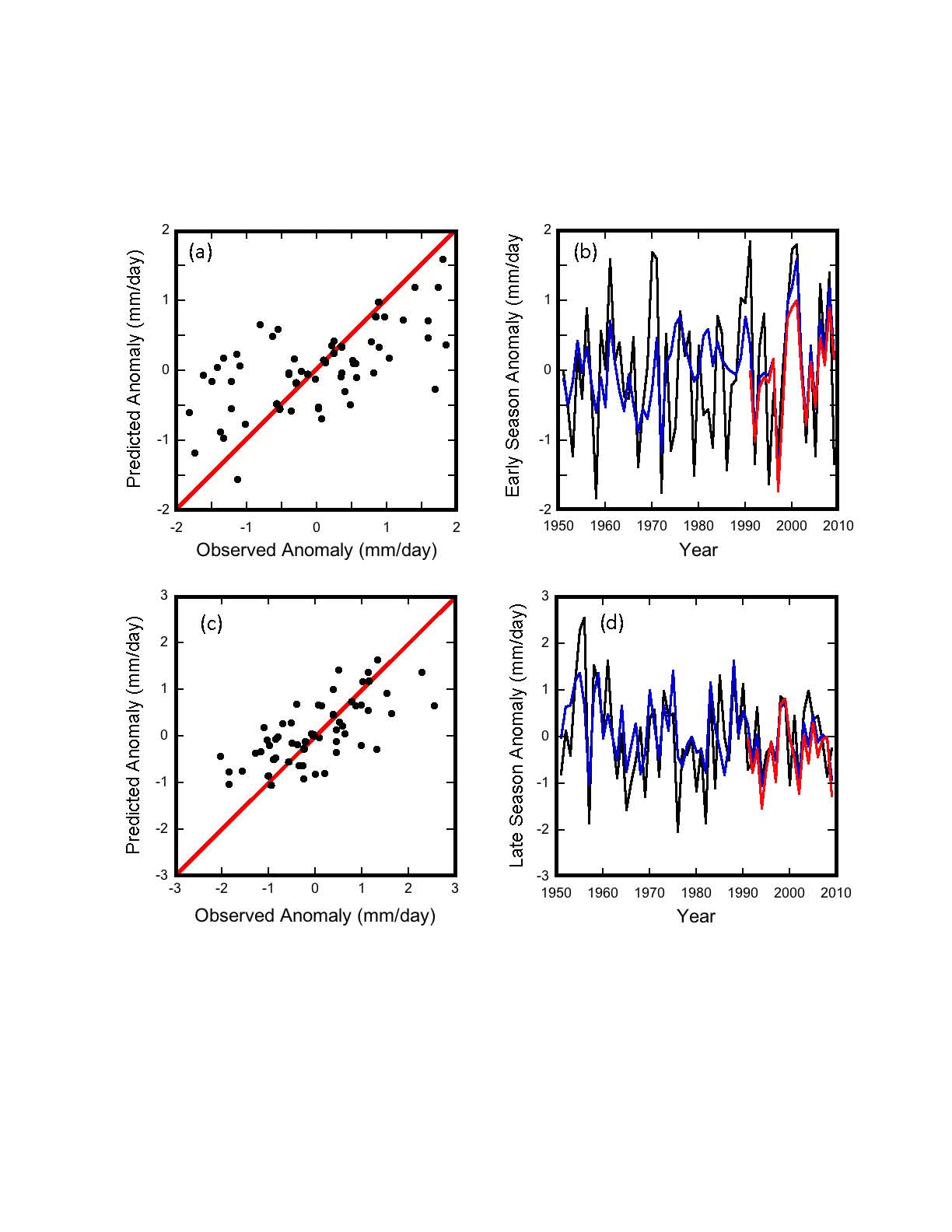Balaji Rajagopalan

Ph.D. Utah State University, 1995
Associate Professor of Civil, Environmental and Architectural Engineering
E-mail: rajagopalan.balaji@colorado.edu
Office: ECOT 541
Phone: 303-492-5968
Web: Prof. Rajagopalan
(Dept. of Civil, Environmental, and Architectural Engineering)
Research Interests
- Stochastic Hydrology and Hydroclimatology
- Nonparametric functional estimation techniques (probability density Functions, regression, scenarios generation, forecasting)
- Understanding low frequency climate variability and its signatures on regional hydrology
- Incorporating climate information in water resources/hydrologic decision making
- Understanding spatio-temporal variability in Indian summer monsoon
- Nonlinear Dynamics - recovering dynamics from data
- Bayesian techniques for optimal combination of information from multiple sources and decision making
Statistical climate modeling and its application to hydrology, water resources eng. related issues; Stochastic modeling of rainfall and other weather variables; scaling issues in rainfall; Spatial estimation of hydro-climate variables; nonparametric estimation of density and regression functions for Multivariate Time series analysis of climate data; Identifying inter-annual variability in hydro climate variables and nonlinear dynamical modeling and forecasting; Inferring long range climate variability through statistical analysis of paleo proxy data.
Current Research: Predicting early- and late-season Indian monsoon rainfall

Figure 1. Correlation maps of Indian rainfall with moist static energy (MSE) and sea surface temperatures (SST). Full caption in DOI: 10.1002/2014GL060429
India’s vital dependence on its summer monsoon rainfall for agriculture and other water resources makes improving forecasting of rainfall amount a continual challenge. Variability and predictability hinge on two widely regarded influences: local land warming and distant El Niño Southern Oscillation (ENSO). Most statistical methods for forecasting monsoon rainfall, used by the India Meteorological Department, use predictors related to these influences. Although a combination of such predictors once engendered optimism, marked variations in correlations with ENSO indices has cast doubt on such predictors. When applied to the entire monsoon season, such predictors generally account for less than 20 percent of variance in observed rainfall over India. Similarly, predictions exploiting general circulation models and surface boundary conditions account for less than 20 percent of observed monsoon variance.
We exploit ENSO indices and moist static energy (MSE) of surface air over the Indian subcontinent and surroundings as predictors of monsoon rainfall over India (Figure 1) during early and late seasons (May 20-June 15 and September 20-October 15). Although these seasons only contribute about 22 percent of the entire seasonal rainfall, they affect planning of agriculture and water resources. A simple, nonlinear statistical model applied to these predictors accounts for about 40 and 45 percent of observed variance of early and late-season rainfall, respectively, and similar fractions of three day maximum rainfall intensity (Figure 2). Forecasted average and three day maximum rainfall at grid points covering India show greatest success over Central India during the early season and over West-Central, Northwestern, and Northern India during the late season, regions where agriculture dominates land use. But these predictors offer virtually no predictability of peak season rainfall, at least with ENSO and MSE. This is noteworthy because the target, if not holy grail, of Indian monsoon prediction has been the seasonal total rainfall, which apart from being less predictable might also ultimately be of limited use. This research prompts a re-thinking of monsoon forecasting to attributes that not only are more predictable but also of value for agriculture and water-resources planning.

Figure 2. Observed, modeled, and forecasted standardized rainfall anomalies. Full caption in DOI: 10.1002/2014GL060429
Publications
Click here for a complete list of published works »
Rajagopalan is a professor at the University of Colorado at Boulder.

